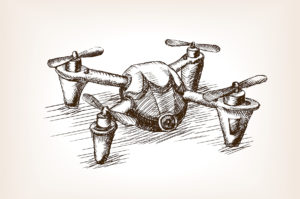Why do I need insurance?
Operating a drone commercially (if you’re not flying down the park for fun, it is most likely a commercial operation) imposes strict liability on both the pilot and owner of the drone jointly and severally. This essentially means that, as a pilot or owner of a drone, you could lose your personal assets, such as your house, if you cause bodily injury or property damage to third parties.
In addition to liability cover, it is also worth considering insurance for your drone and payload equipment.
What type of insurance policy should I get?
There is a wide variety of options currently in the market however it is important to be confident in the underlying service you are purchasing. Operating a drone commercially is an aviation risk operating in an aviation legal environment. An aviation insurance policy provides specific coverage for drones. Most policies will provide an option for insuring your assets (drone and payloads), otherwise known as hull cover, and third-party liability.
When an accident occurs resulting in a claim you will have claims specialist and lawyers who are familiar with the aviation regulatory environment helping to navigate a difficult period for any business.
If you are a member of AAUS or ACUO, discounts are available for insurance.
What is aviation third party liability?
Aviation third party liability binds to the drone itself. It covers third party damage caused by a drone accident. Aviation third party liability is not general public liability.
What is aviation public liability?
Aviation public liability, otherwise known as Premises Liability, covers the business for general public liability. It is important to review the limitations of cover and exclusion as this extension of coverage on drone policies various significantly.
What do I do if I have an accident and need to make a claim?
In the first instance, if required, call 000. Then follow the following steps.
- At a minimum record the following at the time of the accident:
- Place
- Time
- What happened?
- Were there any witnesses? Get their details.
- Was anyone or anything hurt?
- Was anything damaged?
- Drone details (type, model)
- Payload details (serial number, model)
- Who was flying?
- Report the accident to CASA.
https://www.casa.gov.au/safety-management/landing-page/emergencies-and-incident-reporting
- Report the accident to the ATSB.
https://www.atsb.gov.au/mandatory/
- Contact your insurance company or insurance broker.
- Provide initial recorded information and ask if they require any additional detail which might include;
- Proof of ownership documentation
- Licence number and Operator Certificate
- Area approvals or any other special operational exemptions



